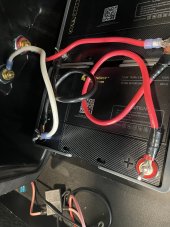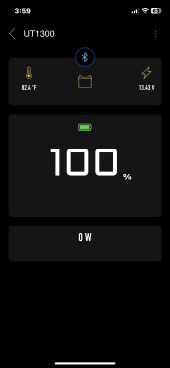I have two brand new Lion Energy 105 amp hour batteries that were installed in my R/V in parallel configuration, both batteries showed they were fully charged using the built in meter on the battery and the Lion Energy Bluetooth app. there is a shunt installed as well, the instruction for the shunt tell you to discharge both batteries to calibrate the discharged state and then recharge them to set the fully charged state. My R/V has 800 watts of solar, and a lithium compatible onboard charger. I turned off the charging devices to start the discharge, and using the Lion app checked on the discharge rate and found that only one battery is discharging. I performed a battery reset per the Lion instructions and repeated the discharge still only one battery discharging per the app. I turned the solar and onboard chargers back on when the and see that the discharged battery is now charging. Anyone have any idea whats going on? Thank you!
Battery discharge in a parallel system
- Thread starter TSHANK
- Start date








